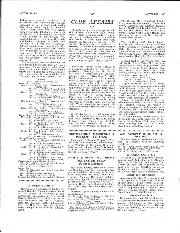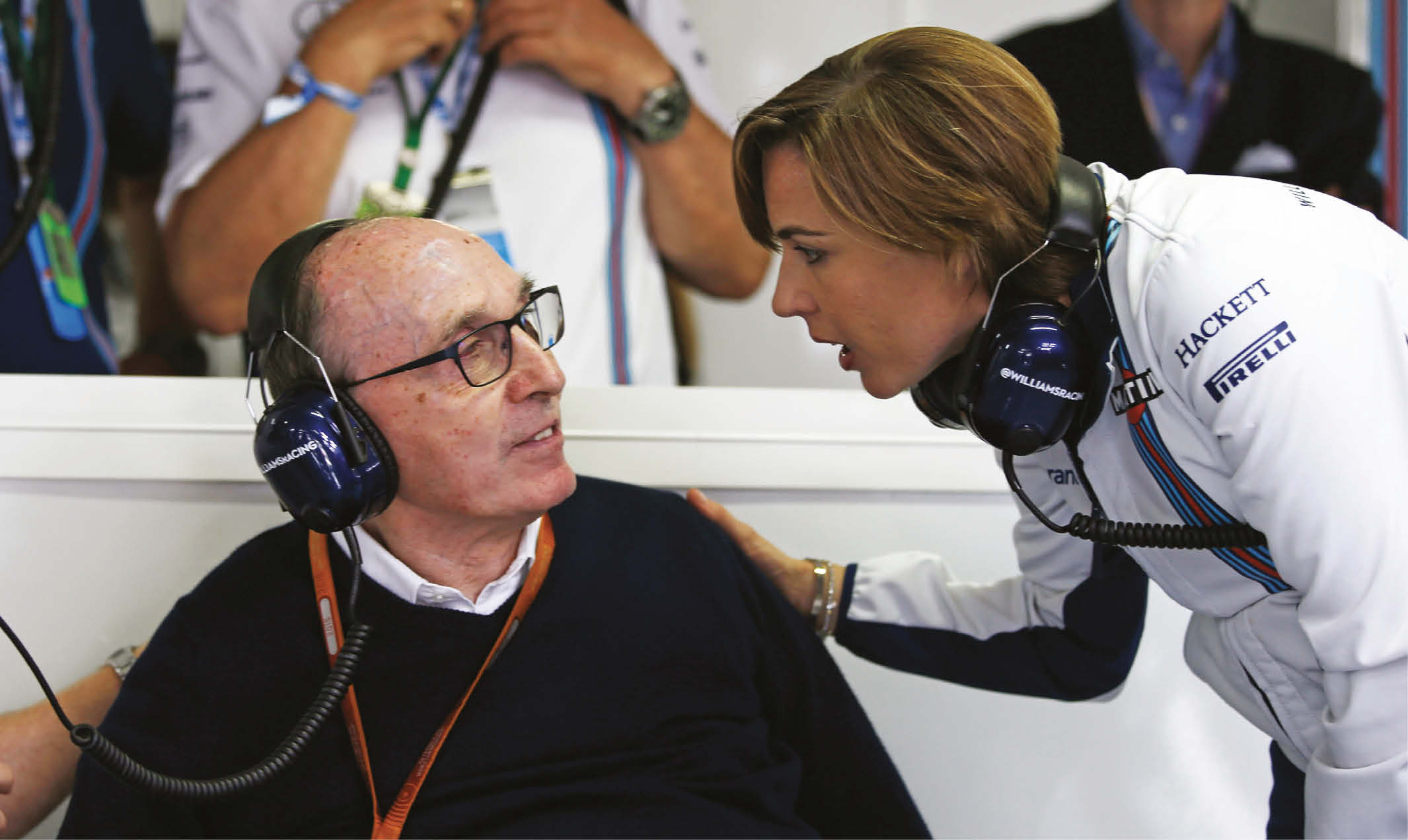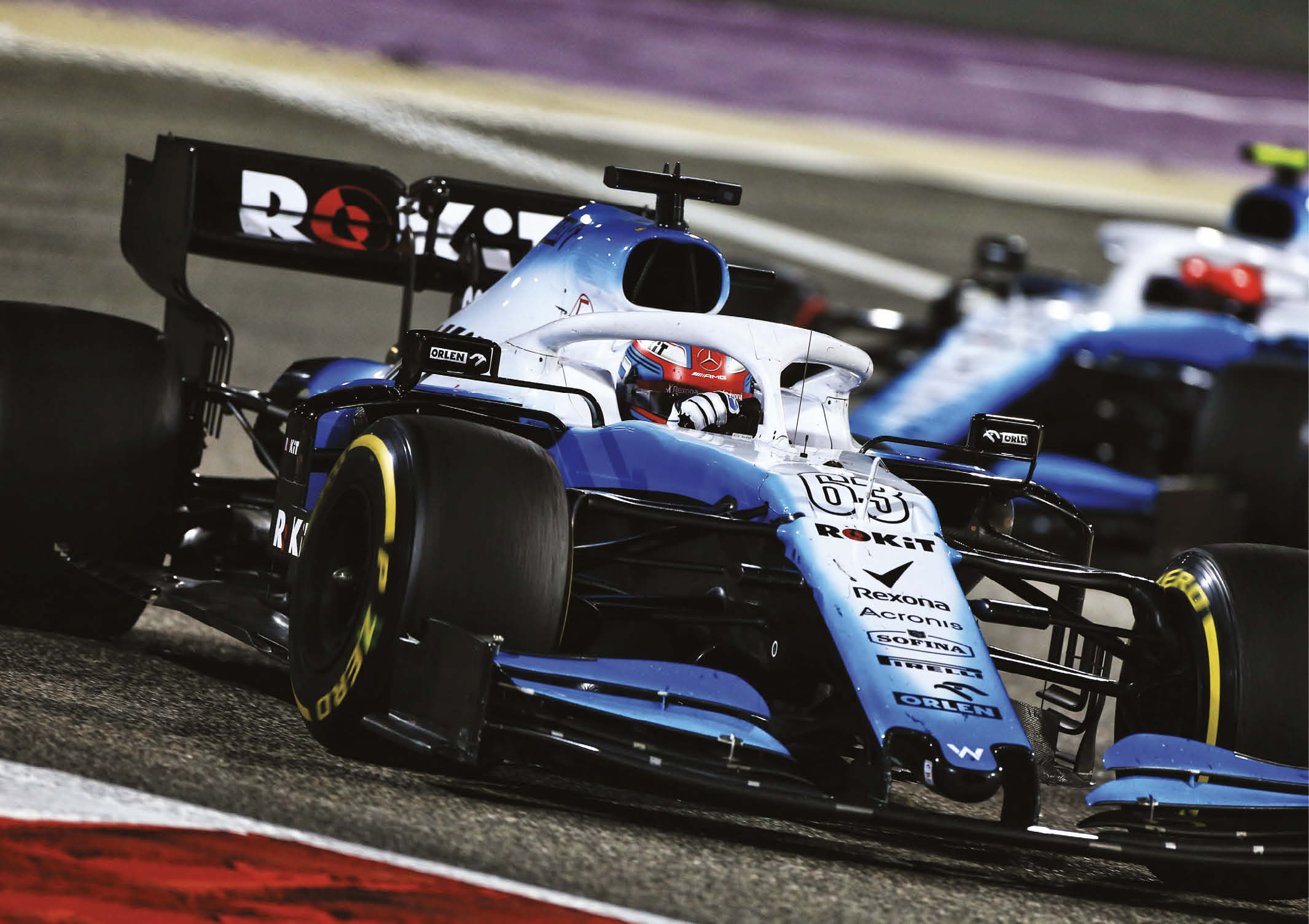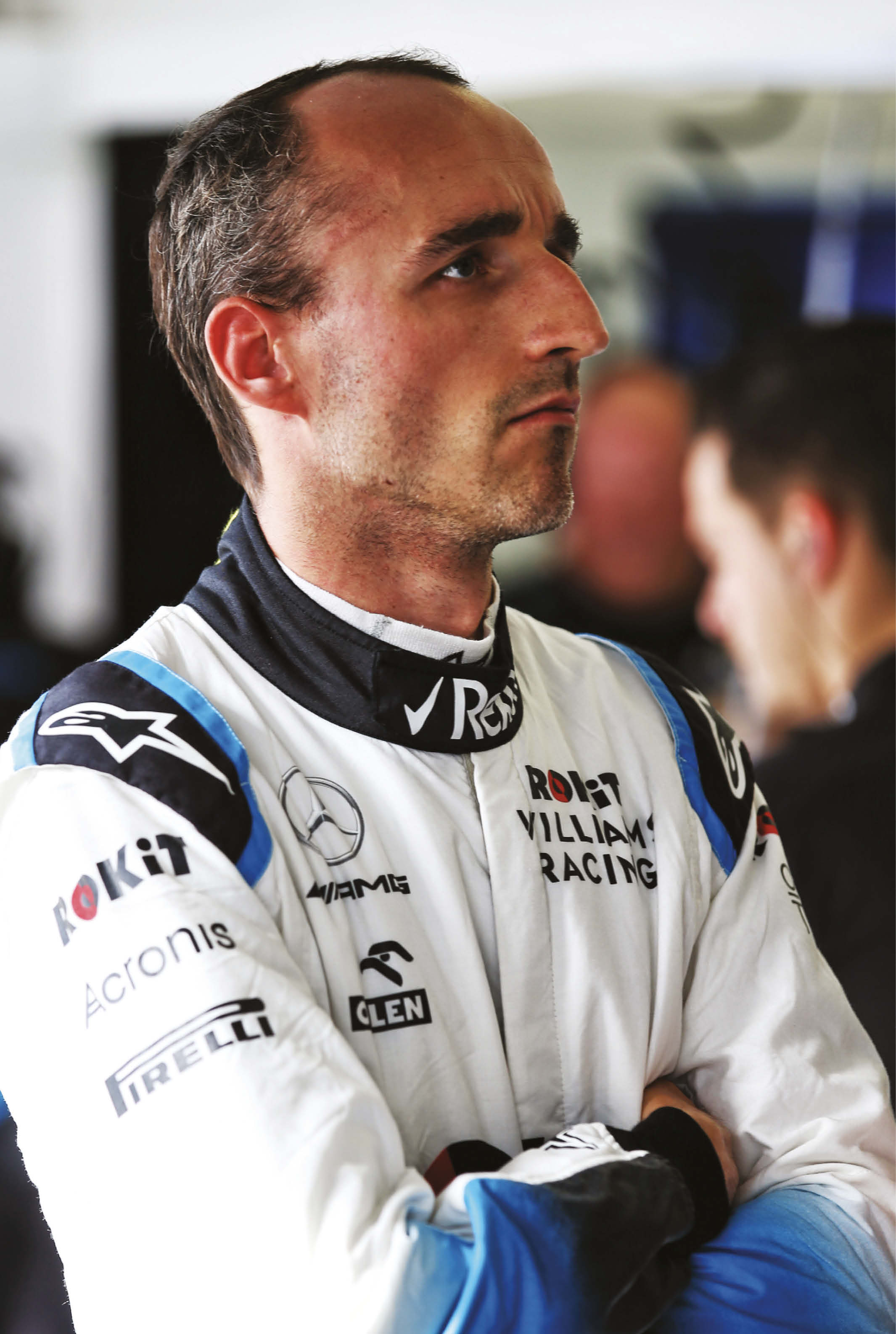
A MANX CAR T.T.?
A MANX CAR T.T. The Manx A.C. has suggested a production car race to be held in the 1.0.M., over four laps of the long Motor-cycle T.T. circuit, on June…
What the hell has gone wrong at Williams? That question has been underlined in red with the debacle of the FW42: from its late completion to its woeful pace. But the query has been lurking like a bad smell for some time.
Perhaps that smell was just a niggling background mustiness at first as the promise of the hybrid era and the big early advantage of Mercedes power was not fully grasped. But the whiff has become progressively more fetid as the fall down the ranks from third in 2014 and ’15 became vertiginous in the last couple of years.
Chief technical officer Paddy Lowe was recruited in 2017 from multiple world titles at McLaren and Mercedes and was supposedly going to be the saviour. That dream ended with dismissal – or ‘leave of absence’ as the legalities insist it should be called – shortly after this year’s car wasn’t ready for the first days of winter testing (accounting for 40 per cent of all winter test days) and then proved hopelessly slow.

The days when ‘Frank and Patrick’ (Williams and Head) would plug in whatever promising, cheap driver could be found and make a world champion of him are gone and the team is now lodged solidly – and for the immediate future – at the very bottom of the pack. In fact, Williams is further away from the pace of the penultimate team than that team is from the front.
Claire Williams assumed the reins of her father’s team in 2013 as age took its toll on Sir Frank. At much the same time, Mike O’Driscoll – a man with a solid financial background in the automotive business – became CEO. Effectively, this was the de facto succession plan for Frank. But for Patrick Head, the technical colossus who’d help Frank make it all happen after years on the margins, there was no such succession. In fact, between the Australian and Bahrain races last month Head agreed to return on a temporary part-time basis eight years after retiring. Which rather illustrates the point. The late completion of the car was just emblematic of deep-seated structural and technical leadership problems.
“Neither Mike nor Claire are engineers and there’s a sense that a technical background is missing”
Neither Mike nor Claire are engineers and there’s an inevitable sense that a third leg of the managerial team – one with a technical background – is missing. That’s originally how Lowe’s position was envisaged, but what Williams/O’Driscoll on one side and Lowe on the other understood that role to be was quite different. That matter was never resolved as communications between them were sometimes bizarrely amorphous.
The problems run far deeper than a car that wasn’t ready in time because of shortfalls in procurement, which meant several externally-supplied parts were not delivered in time for the build. This is a family-owned team requiring a significant update and the management team has not been adequately guided by a senior technical person for a very long time. The question is: have they allowed themselves that guidance?
It was doubly unfortunate that the turning of the generations at Williams should coincide with a team caught awkwardly in the middle of a structural change within the whole sport. It has posed an inexperienced management team with a set of inbuilt unresolved problems, technical in nature.
The technical directors before Lowe – Mark Gillan, Mike Coughlan, Pat Symonds – were there only briefly and would contend they didn’t have the authority to instigate any deep-seated structural changes. Or that it was simply too big a job to undertake on their own initiative, involving as it would have done an entirely different business model. What would that model have looked like? One where Williams recognised that in the manufacturer era, the most effective way to create the fastest car possible on the available budget was no longer to build it almost entirely in-house.
As F1 has moved further towards a satellite team model (with Haas at the most extreme, but also including Alfa Romeo, Toro Rosso and Racing Point), so Williams and McLaren have become ever-further out on a limb as non-manufacturer independents. Money spent making non-performance-critical components is thus unavailable for performance. But further than that, there are aspects of Williams, whole departments, stuck in the 1990s in terms of processes and attitudes. Production turnaround, for example, is a long way off that of most teams.
When Lowe was recruited, he was empowered in a way his immediate predecessors had not been. No technical decisions could be made by the other directors; only he had that power. Their fate was therefore in his hands. Lowe is a thoroughly capable engineer and performed a vital function as a cog within the big wheel of McLaren, but in the looser structure of Williams the role was intensely demanding of inspirational and leadership skills, while also requiring a proactive involvement in the very weave of the processes and details. He saw his role as one of overseeing the big picture – but, taking readings from within the team, there was no one attending to the nitty-gritty of implementing his vision and no one communicating it to those who needed to know. Given Lowe’s empowerment, this lack of guidance and direction became a problem without an owner. Now that Paddy has been removed, the underlying structural problems remain.
When James Allison was parting ways with Ferrari mid-2016, Williams was strongly in the running for his services. He might well have been a better fit than Lowe, given the particular demands of Williams, but Mercedes came calling at Allison’s door and Toto Wolff – in order to make way for Allison – helped soften Lowe’s exit from Mercedes by liaising with Williams. Nonetheless, “We were excited about getting Paddy,” says Claire. “There were questions about Williams falling into a cycle of decline and this was a statement of intent.”

It didn’t work out that way. A line had been drawn under the lineage of design instigated in 2014 with the FW36, and which had continued through to the end of 2016. Mercedes power became less of a differentiating factor as Ferrari and its customers improved, so Williams’ promising start to the hybrid era – just a year after Claire took the reins – was brought up short. “Our success came early,” Claire adds. “Mike and I inherited a team that had been eighth/ninth, then after making a decision about Mercedes power and building quite a neat little car, we finished third… We were perhaps slightly blinded by that success and probably thought it was a bit easier than we should have done.”
In fact, what they’d inherited was a team with those underlying problems, which were simply disguised by an initial power advantage over much of the field. Those problems were perhaps ignored as a consequence but were fully exposed with the clean-sheet design of last year’s FW41, a truly disastrous car from beginning to end. Lowe had joined after the concept and design were already well underway. Its woeful form triggered a series of high-profile departures, including Dirk de Beer and Ed Wood (chiefs of aero and design respectively), but Lowe could legitimately absolve himself of full responsibility for this car. He would be judged instead on the FW42 – and was.
Lowe was the wrong man for the specific conundrum presented by the circumstances of Williams. The management of the team – stretching back way further than the current management, but including it – has failed to resolve those difficulties. The consequences of that have accumulated season upon season.
“Yes, we are still in the ’90s in some areas. Our car build has demonstrated that”
“Someone said to me that I need to look at Williams as a start-up,” says Claire. “But actually, it’s worse than that… We’ve inherited more than 40 years of the way things have been done. So, in some ways it’s worse than a start-up as you have decades of bsuild-up layers.”
Williams remains a team out of its time. Simply put, F1 doesn’t care what the reasons behind under-performance might be. The objective is to put on track the fastest racing car possible, not to achieve some prize for constructing the highest percentage of parts in your own factory. The timing monitors reveal the reality, to the thousandth of a second.
Claire and Mike can look to the timing monitors to see how they’re doing. But they should also be credited for the fact that they are even there to look at the monitors. Savvy financial management from O’Driscoll put the team on a much more solid financial footing than it had been, and Claire played a key part in sealing deals such as that with current sponsor ROKiT (said to be worth a very handy £16 million).
Claire and O’Driscoll are well aware of the problems and readily admit to previous mistakes. But that, too, is of no relevance to the timing monitor. What does the future hold, given that 2019 is effectively already a write-off?
“First off, we’re doing a full after-action review off the back of testing – about what happened by not getting the car there,” replies the boss. “Then there are the wider issues to do with technical leadership… Yes, we are still in the ’90s in some areas. Our car build has demonstrated that. Do we have the structure, processes and resource we need? We do, but they are at their limits. So what can we do, what can we reorganise, reshape to make it more efficient and cost-effective? We know a huge amount of stuff across each department about what’s working, what’s not working. We’re fixing those issues. We’ve done a huge amount of work around cultural transformation, making sure the culture is right so people know what is expected and what our ambitions are. We have to have the right structures.”


Do those structures involve a move towards the Racing Point model? Claire has been quoted as saying “over her dead body”. While she still insists that the existing model of manufacturing is viable, she’s now less fundamentalist in what that entails. “If we are not going to get the limitations put on technical collaborations for which we are lobbying, and there are some areas where we felt outsourcing would be better, then OK, we will adapt. We’re not going to be dinosaurs.
“Aero is a work in progress. Under Doug McKiernan it has definitely taken a step forward.” His technical philosophies are quite different from those of the previous aero chiefs. “We hadn’t had a new front wing on the car for years,” continues Claire, “so what Doug’s done is strip everything back to basics and started again from a new platform.”
The philosophy of McKiernan – who assumed leadership of the aero department a year ago – is that it isn’t ultimate downforce that is critical, but the shape of the aero map throughout the different dynamic states of the car (speed, roll, pitch/dive, steering angles etc) and keeping that shape nicely progressive. That’s been the philosophy behind the FW42 and it has produced a car that’s quite consistent but badly lacking in ultimate downforce. It’s far from established that they are on the right path with this approach.
That’s just one of the areas Patrick Head will be looking at. Head himself is not looking to reprise his former role, but simply trying to help out by giving guidance to a technical team that’s in some disarray and understandably demotivated.
Claire admits there have been times when she’s questioned whether she’s the right person for the role in which these challenging circumstances have placed her. “I have done good things people don’t see. I have brought in budget every year. I’m always thinking, ‘Is there a different role for me?’ I’m not arrogant enough to think only I could do this. It would take the board to tell me.
“Given the environment since the 2012 team payment agreement was put in place, we’re in a solid place financially. We’ve managed to reduce our debt and sustain cashflow and we are constantly recruiting for 35-40 jobs. We’ve had a horrid 2018-19, but you can’t myopically look at one year. Putting the underpinnings in place for 2021 onwards is our focus. We hope the FIA and F1 do their part to allow independent teams to be successful.”